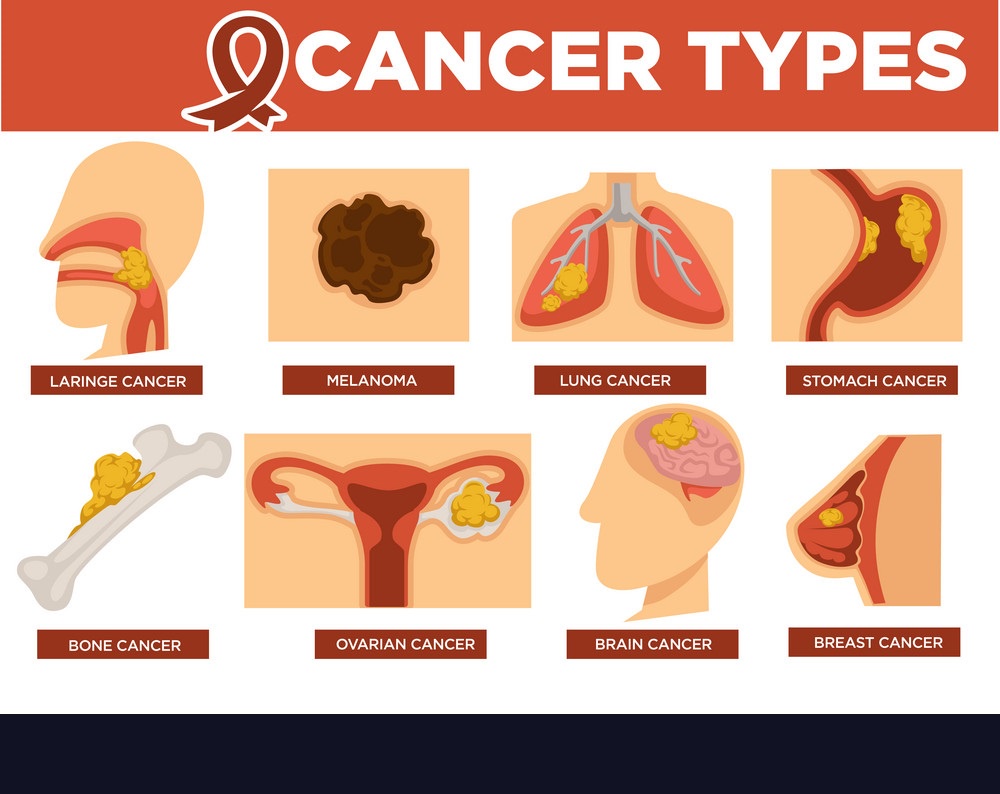Introduction
Cancer is a complex and challenging group of diseases characterized by the uncontrolled growth of abnormal cells in the body. It manifests in various forms, affecting different organs and tissues. In this article, we will explore the vast spectrum of cancer types, with a special focus on the distinct subtypes of liver and kidney cancer.
Different Types of Cancer
Cancer is not a single disease but a collective term for numerous conditions, each uniquely identified by its tissue of origin, growth patterns, and characteristics. Here are some of the different types of cancer:
-
Breast Cancer: Originating in the breast tissue, this cancer primarily affects women but can also occur in men.
-
Lung Cancer: Often caused by tobacco smoking, this cancer originates in the lungs and can be broadly categorized into non-small cell lung cancer and small cell lung cancer.
-
Colon and Rectal Cancer: Also known as colorectal cancer, this affects the colon or rectum and is highly treatable when detected early.
-
Prostate Cancer: A common cancer in men, it begins in the prostate gland.
-
Ovarian Cancer: This cancer starts in the ovaries, and it is often called the "silent killer" due to its subtle symptoms.
-
Pancreatic Cancer: Originating in the pancreas, this cancer is challenging to detect and often diagnosed at an advanced stage.
-
Melanoma: A type of skin cancer that can be life-threatening if not caught and treated early.
-
Bladder Cancer: Originating in the bladder lining, it is often linked to smoking and chemical exposures.
-
Thyroid Cancer: This cancer starts in the thyroid gland in the neck, and most cases have an excellent prognosis.
-
Leukemia: A cancer of the blood and bone marrow, it includes several subtypes, such as acute lymphoblastic leukemia and chronic myeloid leukemia.
Types of Liver Cancer
Liver cancer, also known as hepatocellular carcinoma (HCC), encompasses various subtypes, each with distinct characteristics:
-
Hepatocellular Carcinoma (HCC): HCC is the most common type of liver cancer and primarily arises from hepatocytes, the main functioning cells of the liver.
-
Intrahepatic Cholangiocarcinoma: This cancer begins in the small bile ducts within the liver and is less common than HCC.
-
Hepatoblastoma: Hepatoblastoma is a rare pediatric liver cancer, mainly affecting children under the age of 3.
-
Fibrolamellar Carcinoma: This variant of HCC is relatively rare and primarily affects young adults.
-
Angiosarcoma: This aggressive liver cancer originates in the blood vessels of the liver.
-
Hemangiosarcoma: Another rare liver cancer, hemangiosarcoma starts in the blood vessels and is often challenging to treat.
Types of Kidney Cancer
Renal cell carcinoma (RCC) is the most common type of kidney cancer and is further divided into various subtypes:
-
Clear Cell Renal Cell Carcinoma: This is the most prevalent subtype of RCC, characterized by clear cells and accounting for about 75% of kidney cancers.
-
Papillary Renal Cell Carcinoma: Papillary RCC is the second most common subtype, characterized by small, finger-like projections in the cancer cells.
-
Chromophobe Renal Cell Carcinoma: Chromophobe RCC is a less common subtype with large, pale cells.
-
Collecting Duct Carcinoma: This is a rare and aggressive form of kidney cancer that originates in the collecting ducts of the kidney.
-
Medullary Carcinoma: This rare subtype is more common in individuals with sickle cell trait and is known for its aggressive nature.
-
Translocation Renal Cell Carcinoma: This rare form of kidney cancer is characterized by genetic translocations.
-
Unclassified Renal Cell Carcinoma: Some kidney cancers do not fit neatly into the defined subtypes and are categorized as unclassified RCC.
Conclusion
Cancer is a multifaceted and diverse set of diseases that affect various parts of the body. It is essential to understand the distinct types and subtypes to better diagnose, treat, and manage this complex condition. While liver cancer, including hepatocellular carcinoma and its subtypes, and kidney cancer, with various renal cell carcinoma subtypes, present their unique challenges, advancements in medical research and treatment options continue to improve outcomes for patients facing these malignancies.
As medical science progresses, our understanding of cancer deepens, offering hope for more effective treatments and better outcomes. The ability to differentiate between the various cancer types and subtypes allows for more tailored approaches to diagnosis and treatment, ultimately increasing the chances of successful management and survival for those affected by these conditions.


No comments yet